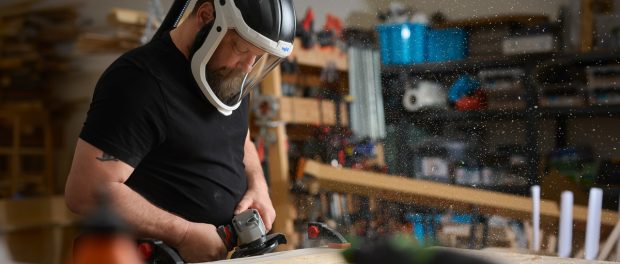The importance of inclusivity in respiratory protection
 Draeger Safety UK.
Draeger Safety UK.
Ian Kelsall, Technical Specialist, Respiratory Protection Equipment (RPE), Draeger Safety UK
Providing respiratory protective equipment (RPE) for employees operating in the construction industry is a well-recognised and generally well-understood requirement for employers. However, the practical realities of supplying appropriately fitting RPE requiring a tight seal to the face, such as Filtering Face Pieces (FFPs) and half and full-face masks, that truly fit each user to protect them from airborne hazards, can be a more complex challenge.
Many common tasks undertaken across construction sites can create airborne contaminants that pose significant risks, whether cutting, drilling and sanding concrete or stone, demolition work which releases hazardous crystalline silica particles, or woodwork and joinery work which generates fine wood dust particles.
Unfortunately, due to the dynamic nature of the industry and sometimes limited use of engineering controls, construction workers are regularly exposed to these hazards and have a high risk of developing life-changing diseases, including asthma, chronic obstructive pulmonary disease (COPD), silicosis and cancer. These diseases can cause permanent disability or even death.
The Health and Safety Executive (HSE) outlines two key considerations when specifying RPE:
- ‘Is the equipment adequate? i.e., is it appropriate for the type of hazard and does it reduce exposure to the levels needed to protect the health of the worker?
- ‘Is the equipment suitable?’ i.e. is it appropriate for the wearer, the task and the environment? This can be more challenging as it includes the suitability for the individual, includes, crucially – the fit.
The importance of fit goes beyond having a tight fit creating a seal, which is essential to ensure protection from hazardous substances entering around the sides of the mask. Poor fit can also lead to poor compliance, as badly fitting equipment will often be uncomfortable, or the mask simply ‘won’t feel right’ and therefore workers may wear the RPE incorrectly, or not at all.
When it comes to the fit of a mask, design plays a crucial role and is key to creating RPE that meets the changing requirements of today’s diverse workforce.
On many construction sites, workers are issued with disposable dust masks or FFPs; however, finding a design that fits most face sizes can be challenging. To overcome this, Dräger has pioneered a design which focuses on a three-fold model, providing greater flexibility in both height and width. Extensive testing found that developing this mask design in two sizes resulted in a 96 per cent pass rate in face fit tests.
Powered Air Purifying Respirator (PAPR)
Of course, a range of other issues beyond face size and shape also affect whether a piece of RPE is suitable for the individual. Wrinkles, moles, warts, deep cuts, scars, piercings, facial hair and medical fitness can all impact respiratory protective equipment. For these groups, a mask is often not an option, so in such scenarios, a Powered Air Purifying Respirator (PAPR) provides a solution.
For more information, visit:


